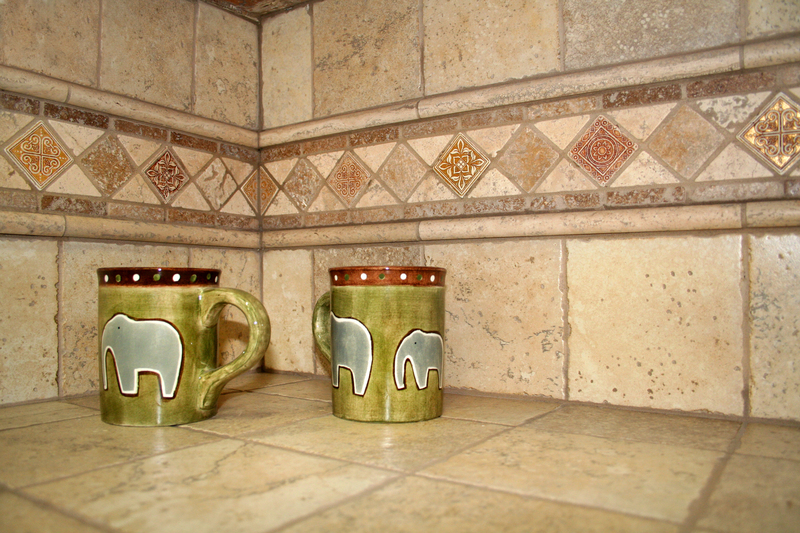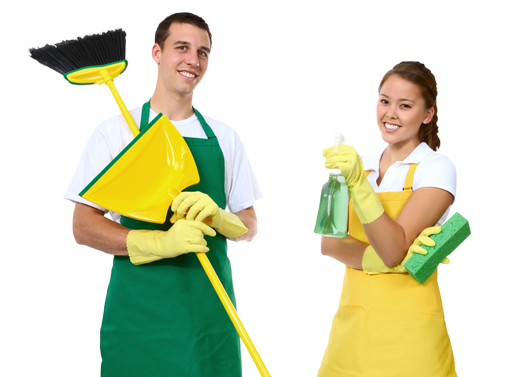Steps to a Hygienic, Mold-Free Bathroom
Posted on 17/06/2025
Maintaining a hygienic, mold-free bathroom is essential for safeguarding your family's health, extending the life of your home, and enjoying a clean, fresh environment. The bathroom is particularly prone to mold growth because of the high levels of moisture, humidity, and organic materials available. In this comprehensive guide, we'll explore practical, actionable steps to prevent mold, boost hygiene, and foster a sparkling-clean bathroom every day.
Why Is Bathroom Hygiene Important?
Your bathroom is a sanctuary for cleanliness--but ironically, it can also harbor germs, bacteria, and unsightly mold. Hygiene is crucial in the bathroom to prevent unpleasant odors, stains, and health hazards such as respiratory problems, allergies, and infections. Consistent cleaning and mold prevention keep your bathroom environment safe and welcoming.
- Improves indoor air quality
- Protects your property's structure
- Enhances the longevity of bathroom fixtures
- Promotes overall well-being and peace of mind

What Causes Mold in Bathrooms?
*Understanding what leads to mold in bathrooms aids in developing a robust prevention strategy.* Mold thrives in damp areas, feeding on organic matter such as dust, soap scum, and paper. Here are key culprits:
- Excess humidity from steamy showers or baths
- Poor ventilation or lack of exhaust fans
- Leaking pipes, faucets, or fixtures
- Standing water and slow-drying surfaces
- Neglected cleaning routines
Key Steps to a Mold-Free and Hygienic Bathroom
Let's dive into the main steps for a mold-free, hygienic bathroom, ensuring both cleanliness and long-term protection from harmful fungi and bacteria.
1. Optimize Bathroom Ventilation
Ventilation is the first--and arguably, the most important--defense against mold in bathrooms. Without proper airflow, humidity accumulates and gives mold ample opportunity to flourish.
- Install or Upgrade an Exhaust Fan: Choose a high-quality exhaust fan designed for your bathroom size. Turn it on during and after showers for at least 20-30 minutes.
- Open Windows and Doors: Whenever possible, crack open a bathroom window or keep the door ajar to encourage fresh air circulation.
- Position dehumidifiers if you live in humid climates or have windowless bathrooms.
Pro tip: Clean your exhaust fan's cover and motor at least twice a year to maintain efficiency.
2. Fix Leaks Promptly
Constant drips and leaks make surfaces wet, inviting mold to set up camp. Check your bathroom for:
- Leaky faucets and shower heads
- Toilet base or tank leaks
- Weeping pipes under the sink
- Damp or soft spots on floors and walls
Repair any plumbing leaks immediately to keep surfaces dry and less hospitable to mold.
3. Maintain Regular, Deep Cleaning Routines
Frequent cleaning removes the build-up of soap scum, grime, and organic residues--the food sources for mold and bacteria.
- Disinfect all surfaces weekly: Focus on tubs, showers, sinks, and tiles. Use a mold-inhibiting bathroom cleaner or a homemade mix of white vinegar and baking soda.
- Clean shower curtains and liners: Wash fabric curtains on a hot cycle. For plastic liners, wipe with vinegar or run them through the washing machine.
- Scrub tile grout with an old toothbrush and a paste of baking soda and hydrogen peroxide to keep it bright and mold-free.
- Don't forget hidden areas: under soap dishes, around taps, and behind toilets!
4. Keep Surfaces Dry
Mold can grow within 24-48 hours on damp surfaces. After bathing or showering, take steps to minimize moisture:
- Use a squeegee on shower walls and doors: Remove as much water as possible after every use.
- Wipe down sinks and counters daily, especially around faucets and seams.
- Shake out bath mats and hang them to dry after each use.
- Hang towels on rods rather than keeping them in a pile.
Tip: Choose fast-drying towels and mats to reduce moisture retention.
5. Select Mold-Resistant Materials and Paints
Choosing mold-resistant products at the outset can reduce maintenance and boost hygiene:
- Mold-resistant drywall (greenboard or cement board) in areas exposed to lots of moisture
- Anti-mold or mildew-resistant paints (look for paints containing antimicrobial agents)
- Silicone-based caulks in place of standard bathroom caulk to deter mold growth
- Non-porous tiles for flooring and walls for easier cleaning
Mold prevention starts with good material choices!
6. Eliminate Clutter
Bottles, soaps, and sponges left in the shower or on counters collect water and dust, creating micro-environments for mold and bacteria to flourish.
- Store only essentials in the shower and rotate items as needed.
- Avoid using wooden accessories, which soak up moisture and encourage mold growth.
- Keep countertops clear and wipe them down frequently.
7. Clean & Replace Grout and Caulk
Grout and caulk are hot spots for mold in bathrooms--being both porous and often exposed to water.
- Inspect grout and caulk for discoloration, cracks, or gaps regularly.
- Use a toothbrush and a solution of bleach diluted in water (or a specialized grout cleaner) to scrub away mold from tiles and caulking lines.
- Replace deteriorated grout and caulk. This creates a water-tight seal, denying mold entry points.
8. Manage Bathroom Humidity Levels
Maintaining an appropriate humidity level is paramount in keeping mold at bay. Aim to keep bathroom humidity below 50% using the following techniques:
- Run an exhaust fan while showering and leave it on afterwards for at least 30 minutes.
- Open doors and windows after every use to allow quicker drying.
- Consider a small dehumidifier if your bathroom stays damp, especially in basements or high-humidity areas.
- Monitor humidity with a hygrometer for accurate readings.
9. Wash Towels, Mats, and Curtains Regularly
Fabric items absorb moisture and can become unwitting homes for mold spores.
- Wash bath towels every three to four uses--or more frequently in humid conditions.
- Launder bath mats weekly, and air them out between washes.
- Replace or wash shower curtains and liners at least monthly.
10. Inspect and Maintain Bathroom Drains
Slow drains can leave standing water in showers and sinks, leading to mold and unpleasant odors.
- Clear hair, soap scum, and debris from drains each week.
- Use a natural drain cleaner monthly: Pour a cup of baking soda, followed by vinegar, then flush with boiling water after 10 minutes.
- Replace or repair faulty drain pipes promptly.
Natural Mold Prevention Tips for Your Bathroom
If you prefer green cleaning solutions, maintaining a mold-free bathroom is possible with nature-inspired remedies:
- White vinegar: Spray undiluted white vinegar on problem areas and leave for an hour before scrubbing clean.
- Baking soda: Make a thick paste with water and spread on stubborn mold spots, then rinse.
- Tea tree oil: Mix 1 teaspoon with a cup of water, spray, and let it sit without rinsing for natural antifungal power.
- Hydrogen peroxide: Excellent for killing mold spores--use a 3% solution in a spray bottle.
Always perform a patch test to avoid damaging sensitive surfaces.
How to Handle an Existing Mold Issue
Despite your best efforts, mold may sometimes develop due to past water damage or deeply embedded spores. Address mold immediately to protect your home and health.
- Identify the source: Fix leaks or moisture problems first.
- Wear gloves and a mask: Protect your skin and lungs during removal.
- Isolate the area: Keep doors closed to prevent spread of spores.
- Clean small mold patches: Use above natural or store-bought fungicides.
- Dispose of absorbent materials (e.g., tiles or drywall) if infested: Certain materials cannot be salvaged.
- For large infestations, call a professional mold remediation service.
Remember: Mold removal is most effective when accompanied by permanent moisture reduction.
Long-Term Bathroom Hygiene Habits
Once your bathroom is clean and mold-free, stick to a preventive routine to maintain your results:
- Daily: Squeegee shower walls, hang towels properly, and use exhaust fans.
- Weekly: Scrub key surfaces, change towels and clean mats, check for leaks.
- Monthly: Wash shower curtains, inspect grout, and do a thorough check for mold in nooks and crannies.
- Bi-annually: Service bathroom fans, deep-clean tile and grout, and repaint if necessary with mold-resistant paint.
Design Upgrades for a Mold-Proof Bathroom
If you're renovating or looking to reinforce your bathroom's defenses against mold, consider the following upgrades:
- Install a walk-in shower: Reduces water splashes and dry faster than tubs.
- Go for seamless glass shower doors rather than curtains, which dry slower and hold mold.
- Use epoxy grout that is less porous than cement grout and naturally resists mold and stains.
- Incorporate wall-mounted vanities and fixtures, which make cleaning floors much easier.
- Opt for larger tiles: Fewer grout lines mean fewer places for mold to grow.
Summary: Your Path to a Sparkling, Mold-Free Bathroom
Creating a hygienic, mold-free bathroom is a combination of smart design, consistent habits, and rapid response to moisture issues. The key is vigilance: detect problems early, respond promptly, and let no surface stay damp, dirty, or neglected. By following these steps to a hygienic, mold-free bathroom, you'll enjoy peace of mind, protect your health, and preserve the beauty and value of your home.
- Ventilate after each shower
- Dry all surfaces promptly
- Clean regularly with mold-fighting solutions
- Fix leaks immediately
- Choose mold-resistant materials
- Eliminate clutter and standing water
Transform your bathroom into a haven of cleanliness and freshness by implementing these simple, effective steps toward mold prevention and superior hygiene.

Frequently Asked Questions: Mold-Free Bathroom Maintenance
How often should I clean my bathroom to keep it mold-free?
Weekly deep cleaning is recommended for showers, sinks, floors, and toilets. To boost hygiene, perform daily quick spot cleaning, such as squeegeeing shower doors and drying surfaces.
What is the best natural cleaner for bathroom mold?
White vinegar is highly effective. For stubborn stains, combine it with baking soda or hydrogen peroxide for extra cleaning power.
Can mold in the bathroom make you sick?
Yes. Exposure to mold spores can cause allergic reactions, respiratory symptoms, and worsen asthma--especially in sensitive individuals. Maintaining a hygienic, mold-free bathroom is essential for health.
Final Thoughts
By taking immediate action and instilling these steps as part of your cleaning routine, you'll ensure your bathroom remains a sanctuary for relaxation--not a breeding ground for mold and germs. Say goodbye to mold problems and hello to a sparkling, hygienic, mold-free bathroom for years to come!




